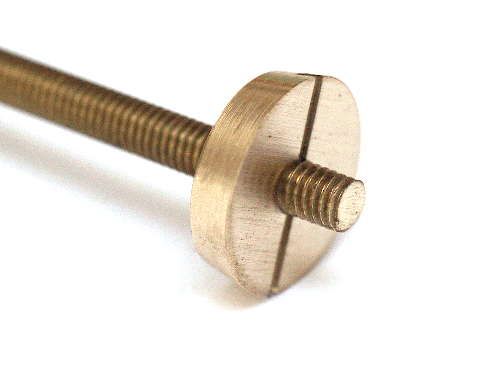Yep, what Any sez matches my experience. None of the saw bolts I've had to deal with matched any Whitworth or Standard American threads in equivalent sizes by a long shot. My impression is that the older the saw, the coarser the threads, too, but that could be just because I've had a skewed sample.
I've made numerous replacements over the last 10 years for various saws both for myself & others. It's easy enough to match the visible parts, be they the older type with split nuts & flush-set heads or the domed heads & sleeve nuts, but not the threads, of course, so it's always a matter of making a matched pair (bolt plus nut) if a bolt is stripped or nut missing. I just use a metric thread, too, either M3 or M4 depending on the size of the originals - some of those cast bolts on pre-20th C saws are really skinny, barely 3mm. These have 4mm shanks. I leave a collar under the head & file it square so it will be a tight fit in teh original hole - matching the ribs on cast bolts is too much bother for too little return:

Easy to spot the odd man out in this line-up:

But once on the saw (& the other heads polished up, it's not so easy:

My worry is that someone in the future may take the handle off a saw like this without noticing that one bolt is different & try to force the wrong nut on the wrong bolt when reassembling. They may figure it out before doing permanent damage, or they mat not....

Cheers,
Ian




































